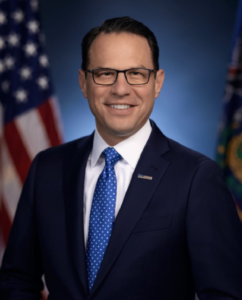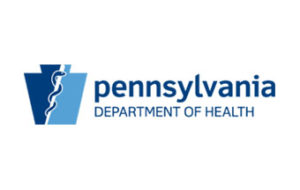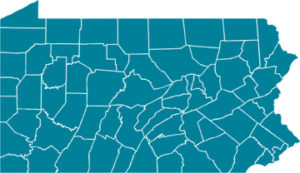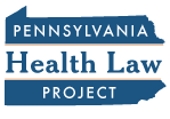PA Health Policy Update for April 21
The following is an update of selected state health policy developments in Pennsylvania from April 17 -21. (Some of the language used below is taken directly from state documents.)
Governor Shapiro 
Governor Shapiro announced this week his administration submitted a notice of intent to temporarily add xylazine, commonly known as “tranq,” to the list of schedule III drugs under Pennsylvania’s Controlled Substance, Drug, Device, and Cosmetic Act. This step is an effort to limit access to xylazine, which is increasingly being found in Pennsylvania’s illicit drug trade. The administration also intends to schedule nitazenes, a class of synthetic opioids, as a schedule I drug.
General Assembly
- The House Aging and Older Adult Services Committee held an informational hearing Thursday, April 20 on The State Master Plan on Aging. A recording of the hearing can be viewed here.
- The House Children and Youth Committee held a public hearing Thursday, April 20 on overcrowding in Pennsylvania’s Juvenile Detention Facilities. A recording of the hearing can be viewed here.
- The state House and Senate will return to Harrisburg on Monday, April 24 for voting session. Following are selected health-related committee proceedings.
-
- The Senate Consumer Protection and Professional Licensure Committee will hold a public hearing Monday, April 24 at 10:00am on professional licensing delays in health care. The hearing will be held in Hearing Room 1 of the North Office Building and will be livestreamed here.
-
- The House Insurance Committee will hold a voting meeting on Monday, April 24 at 11:00 a.m. to consider among other bills, SB 8 which requires insurers to cover all costs associated for genetic counseling and genetic testing for the BRCA1 and BRCA2 gene mutation if a person is diagnosed with breast or ovarian cancer or has a family history of breast or ovarian cancer, and also requires insurers to cover all costs associated with a supplemental breast screening by MRI or Ultrasound for women at increased risk of breast cancer. The meeting will be held in Room B31 of the Main Capitol and will be livestreamed here.
-
- The House Health Committee will hold an informational meeting Wednesday, April 26 at 9:00 a.m. on unregulated intoxicants and psychoactive substances. The hearing will be held in Room G-50 of the Irvis Office Building and will be livestreamed here.
-
- The House Human Services Committee will hold a voting meeting Wednesday, April 26 at 9:15 a.m. to consider the following bills.
- HB 409, which would establish a mental health care services clearinghouse.
- HB 754, which would provide a standard notice to each nursing home resident and their designated representatives at the time of their admission that they have the option of having legal representation to assist with the application for Medicaid benefits.
- The House Human Services Committee will hold a voting meeting Wednesday, April 26 at 9:15 a.m. to consider the following bills.
The meeting will be held in Room 523 of the Irvis Office Building and will be livestreamed here.
-
- The House Professional Licensure Committee will hold an informational meeting April 26 at 10:00am on the Bureau of Professional and Occupational Affairs. The hearing will be held in Room 140 of the Main Capitol and will be livestreamed here.
Department of Health
- The Department of Health (DOH) issued Health Advisory – 691 (2023-PAHAN-691) with important information regarding a Hepatitis A Virus (HAV) outbreak in the southeast region of the state.
- DOH published two notices in the Pennsylvania Bulletin formally announcing its intent to add xylazine as a schedule III controlled substance and nitazenes as a schedule I controlled substance. Following are the notices.
- DOH reminded long-term care facilities that the obligation to report COVID-19 cases and deaths through the ERS will continue beyond the end of the federal PHE on May 11. These records are reportable within 24 hours of diagnosis. Only new cases should be reported and positive cases that later result in death should be amended rather than entered as a new data record. Find details on the reporting process here.
- DOH encouraged nursing care facilities to make every effort to help temporary nurse aides to schedule and complete the required exams to become permanent certified nurse aides as soon as possible. When the federal PHE ends on May 11, candidates will have four months to complete the required testing as long as they are enrolled in an Approved Nurse Aide Training Program and candidates may continue to work in facilities while they complete the training program. Information on preparing and scheduling tests can be found here.
Department of Human Services
- The Department of Human Services (DHS) released the agenda for the Medical Assistance Advisory Committee’s (MAAC) April 27 meeting. In advance of the meeting, DHS also issued a briefing document outlining proposed changes and clarifications to the 340B Drug Pricing Program.
- DHS issued proposed regulations to strengthen and clarify the Adult Protective Services Act (Act 70). Implementation of Act 70 began in 2015 but has operated under agency guidance and contract amendments rather than formal regulation. Find additional information and the proposed regulations in this Pennsylvania Bulletin notice.
- DHS has updated its calendar of mailing dates for Remittance Advices and corresponding electronic transfers and checks into late May. Find the updated calendar here.
Insurance Department
The Insurance Department issued a request for comments on a proposal to suspend the reinsurance program for the state-based insurance exchange, PENNIE®, and potentially replace it with a possible “state subsidy wrap.” Additional information on the proposal and details on how to comment may be found in this Pennsylvania Bulletin notice.
Office of the Attorney General
Attorney General Michelle Henry joined a coalition of seventeen other Attorneys General submitting a letter in support of the Federal Trade Commission’s proposal to prevent businesses from having employees sign non-compete agreements as a condition of employment. Find additional information in this press release.
Independent Regulatory Review Commission
The Independent Regulatory Review Commission (IRRC) released the agenda for its May 18 meeting. Following are certain health-related regulations IRRC will consider.
- Temporary Graduate Perfusionist License
- Environmental Quality Board #7-574: Radiological Health Fees
Stakeholder Events
DHS – Drug Utilization Review (DUR) Board – April 26
The DUR Board will meet Wednesday, April 26 from 9:00 a.m. to 4:00 p.m. Go here for additional information and details on how to participate.
DHS – Medical Assistance Consumer Subcommittee – April 26
The Consumer Subcommittee of the Medical Assistance Advisory Committee is scheduled to meet on April 26, 2023, at 1:00 pm. Go here to register to participate.
DHS – Medical Assistance Advisory Committee – April 27
The Medical Assistance Advisory Committee is scheduled to meet on Thursday, April 27 at 10:00 a.m. Go here to register to participate.
Patient Safety Authority – April 27
The Patient Safety Authority’s board will meet virtually on Thursday, April 27 at 1:00 p.m. Go here for additional information and details on how to participate.
DHS – Managed Long-Term Services and Supports Subcommittee – May 12
The Managed Long-Term Services and Supports (MLTSS) Subcommittee will hold a meeting on Friday, May 12 from 10:00 a.m. – 1:00 p.m. in the Department of Education Building’s Honors Suite, 1st floor, at 333 Market Street in Harrisburg, or via webinar. You may register for the webinar here.
DDAP – Xylazine: A New Drug Additive – June 12
The Department of Drug & Alcohol Programs (DDAP) will host two additional sessions of “Xylazine: A New Drug Additive,” presented by Savage Sisters Recovery, in Harrisburg on June 12, 2023. Please visit the Training Management System for details and to register.



 Election Update
Election Update Around the State
Around the State Pennsylvania has shifted to the federal vaccine locator site,
Pennsylvania has shifted to the federal vaccine locator site,  Department of Human Services
Department of Human Services Included in this month’s edition are articles about:
Included in this month’s edition are articles about: